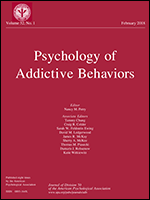McGraw, J. S., Grant Weinandy, J. T., Floyd, C. G., Hoagland, C., Kraus, S. W., & Grubbs, J. B. (2024). Psychology of Addictive Behaviors. Advance online publication. https://doi.org/10.1037/adb0000996
Excerpts:
Up to 11% of men and 3% of women in the United States report feelings of addiction to pornography and … 10.3% of men and 7.0% of women in the United States endorse clinically relevant levels of distress and/or impairment related to feelings of addiction to or compulsivity in sexual behavior.
CSBD is indeed associated with a wide range of concerning clinical phenomena. …
The results of the present study are largely consistent with previous research showing that perceived problems due to pornography use are related to a range of negative psychiatric symptoms including anxiety, depression, anger, and stress.
Individuals who reported higher PPU were more likely to believe they would eventually attempt suicide in the future, even after controlling for the actual frequency of pornography use.
Greater religiousness [and moral disapproval of porn use] was related to less [suicidality].
Abstract
Objective: There is a growing consensus that problematic pornography use (PPU), one of the most commonly reported compulsive sexual behaviors, is related to a number of internalizing psychiatric symptoms (e.g., anxiety, depression). However, little is known about the potential comorbidity of PPU and suicidal thoughts. Given known links between PPU and higher levels of guilt, shame, and moral disapproval, it may be that PPU may be related to suicidal thoughts.
Method: Using two independent samples, we cross-sectionally (Sample 1: undergraduates, n = 422) and longitudinally (Sample 2: nationally representative sample of U.S. adults, n = 1,455) tested for associations between PPU and past-month suicidal ideation and perceived likelihood of suicidal behaviors, while controlling for frequency of pornography use, moral disapproval, moral incongruence, and religiousness.
Results: Cross-sectionally, PPU was related to higher levels of self-perceived likelihood of suicidal behaviors, but not past-month suicidal thoughts. Longitudinally, PPU was related to higher initial levels (i.e., intercept) of past-month suicidal thoughts and self-perceived likelihood of suicidal behaviors, but not changes in either (i.e., slope). The frequency of pornography use was statistically unrelated to each outcome for both samples, while moral beliefs about pornography use showed mixed relationships.
Conclusions: Clinicians working with patients reporting PPU may consider ways it may contribute to suicidal thinking.
Impact Statement
There is a growing consensus that problematic pornography use, one of the most commonly reported compulsive sexual behaviors, is related to a number of internalizing psychiatric symptoms (e.g., anxiety, depression). In the present study, we found cross-sectional and longitudinal evidence that problematic pornography use was also related to more frequent suicidal thoughts or a stronger self-reported belief that a person would eventually attempt suicide in the future, even after controlling for the actual frequency of pornography use.
